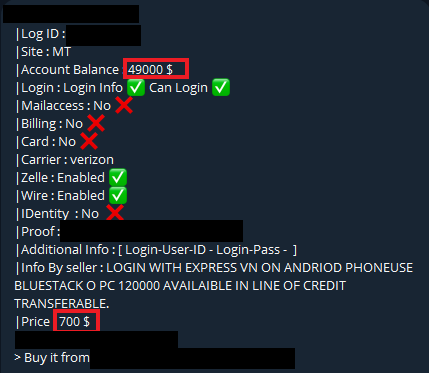Telegram users were today warned of a rising tribe of online scammers on the messenger service used by millions worldwide, including Nigerians.
The activity of online scammers in Telegram has significantly increased, as they take advantage of the convenient functionalities of the messenger, tech security company, Kaspersky, warns in an advisory made available to Technology Times.
Phishers are skillfully utilising the messenger’s capabilities to provide various services from mass-scale automated phishing creation to selling data stolen during a phishing attack, according to Kaspersky’s new research that provides an overview of the phishing market in Telegram.

“Attackers can use this method to collect a wide range of data, including email addresses, phone numbers, account passwords, IP addresses, and the victim’s country. These bots provide a variety of targeted platforms, including messengers, social media, and popular brand websites, to be abused in a future phishing page.”
Kaspersky.
“Messengers’ rise in popularity,” Olga Svistunova, security expert at Kaspersky “has unfortunately led to an increase in criminal activity on the platform. With its powerful automation capabilities, scammers have turned Telegram into a new avenue for darknet activity, including phishing and selling stolen data. It’s important for both users and security experts to stay vigilant and proactive in identifying and combating these threats.”
Phishing bots. Automated, quick and easy on Telegram
One of the most significant aspects of this trend, Kaspersky says, is the use of Telegram bots to automate illegal activities, such as creating phishing pages and collecting user data. “While bots in Telegram help users and businesses automate many routine processes, attackers have found ways to use these bots to automate their malicious activities.”
The tech security company says that creating fake websites in a Telegram bot is a free and easy process that usually consists of several steps. A beginner scammer subscribes to the bot creator’s channel, selects the desired language, creates their bot, and sends the token to the main bot. The new bot is then created to receive data from users who followed phishing links and tried to log in to a fake site. Attackers can use this method to collect a wide range of data, including email addresses, phone numbers, account passwords, IP addresses, and the victim’s country. These bots provide a variety of targeted platforms, including messengers, social media, and popular brand websites, to be abused in a future phishing page.
Phishing-as-a-service: Exclusive, more targeted, more expensive on Telegram
In addition to free phishing kits and automated creation of phishing via Telegram bots, scammers offer paid goods and services under the phishing-as-a-service model. Attackers sell scam and phishing “VIP Pages” – websites created from scratch with a wider range of features or tools for generating such pages. These are no longer primitive copies of well-known brand websites, but more advanced targeted scam resources. For example, a VIP Page may contain social engineering elements such as attractive design and promises of big wins, detection protection, etc. The prices for such fake pages vary from US$10 to $300.

In addition, bank account data obtained through phishing is also put up for sale. Unlike the free data discussed above, paid data is verified up to the amount in the user’s account. For example, to access a bank account with a balance of US$1,400, the owners are asked to pay US$110, and the credentials from an account with a balance of US$49,000 were billed for $700, according to Kaspersky.

Telegram anti-scam tips
To keep your data protected from Telegram phishing attacks and other leaks, Kaspersky experts recommend:
- Be cautious of messages from unknown senders: Phishing attacks often come from unknown or suspicious-looking senders. If you receive a message from an unfamiliar user or number, don’t click on any links or provide any personal information.
- Use strong passwords: Use unique passwords for all your messaging app accounts. Avoid using the same password across multiple accounts, and consider using a password manager to generate and store strong passwords.
- Verify the authenticity of links: Before clicking on any links, check to see if they’re legitimate. Scammers often create fake websites that look similar to the real ones, so it’s important to double-check the URL before entering any login credentials or other sensitive information.
- Use two-factor authentication: Adding an extra layer of security to your account can help prevent unauthorised access. Enable two-factor authentication on your messaging app to ensure that only you can access your account.
- Use security solutions: a reliable security solution will protect your devices from various types of threats and will keep your data safe.
Source of Article


